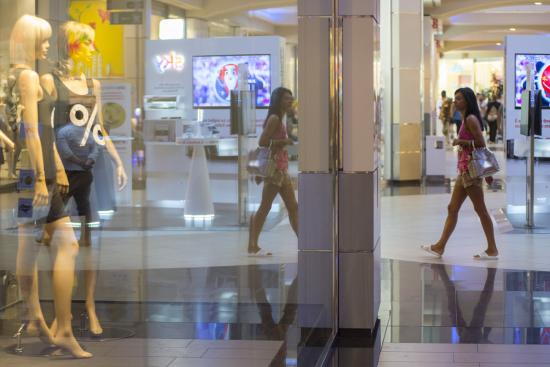How is IGD preparing for the expected increase in consumption?

During a conversation which addressed several issues that are crucial to the recovery of shopping centers and, specifically, to IGD’s future, we recorded the reflections and considerations of Roberto Zoia, IGD SIIQ SPA’s Director of Asset Management, Development and Network Management and Chairman of CNCC, the Consiglio Nazionale dei Centri Commerciali, since October 2020.
Based on the surveys of shopping centers that belong to the CNCC, what trends emerged in the first part of 2021?
I believe that the results for 2020 and the numbers seen in these first months of 2021 indicate unequivocally that people still want to make purchases in person. E-Commerce, in as much as it increased when stores were closed mandatorily, in Italy it wasn’t as widespread. More specifically, the market share of non-essential goods was only impacted marginally by online sales. The indications that we have relative to the economies in which the penetration of e-Commerce has been high for some time, like Great Britain, point to a gradual decrease as an overall percentage in the first three months of 2021. Online and offline are certainly destined to live together as part of omnichannel solutions, but the idea that online is a threat to the survival of in-person sales is, at this point, a thing of the past. We witnessed a quick return to shopping in Italian shopping centers, once the anti-Covid restrictions were eliminated. We are also seeing the effects of pent-up demand which today has an outlet, accompanied by periods of what is referred to as revenge shopping.
Is that a trend that is destined to last?
It would be a fleeting trend if it weren’t for the significant savings that families have accumulated during these months of limited spending, while e-Commerce, in the meantime, took over very limited space. The phenomenon should be looked at by income bracket. The middle class – which postponed the purchase of durable goods like cars and furniture – is particularly active, as are the higher income brackets. Luxury was, in fact, the first segment to show signs of a decided increase in demand.
In the end, this boost fueled by higher savings will affect all types of consumer products: in a few shopping centers the signals are already tangible.
The economy is waking up, supported by expansionary fiscal and monetary policies: more visible job stability will increase the reach of this phenomenon resulting in higher consumer spending in the lower income brackets, as well.
How did IGD’s Italian shopping centers compare to CNCC’s benchmark for member shopping centers?
The comparison with pre-pandemic levels shows that IGD is faring better than the benchmark: for example, sales in IGD’s malls were down 24.5% against the first half of 2019, versus a CNCC average of around 29%. This is attributable to the nature of IGD’s typical asset, an urban shopping center with a strong primary catchment area; this guarantees a certain amount of resilience, above all with respect to the limitations imposed on the operation of non-essential businesses. The average performances monitored by CNCC includes large, regional centers which were particularly hard hit by the pandemic waves and which, presumably, will have slower recovery times.
The numbers for June, the first full month without mandatory closures, are, however, reassuring for the whole system.
You also have a role in institutional relations, as you have been Chairman of CNCC since October. How have the discussions you’ve had with the policy makers gone over these last few weeks?
On 24 July 2021 the law converting Law Decree Sostegni Bis was published. We worked very hard on this law as an association in order to ensure that retail businesses with sales both less and more than €15 million received government assistance.
This result is very important in economic terms, but also as a signal that the government has not forgotten about “physical” retail enterprises.
On 28 July Legislative Decree 77 of 31 May 2021 – the Semplificazioni decree – was approved definitively. The decree defines how the Italian recovery plan – ll Piano Nazionale di Ripresa e Resilienza – will be governed. An oversight board, chaired by the Prime Minister, was set up comprising ministers and under-secretaries expert in the different topics that will be dealt with. We, therefore, worked to establish a dialogue with the members of this oversight board in order to make our contribution to the different projects. In a few instances, we pointed out the importance shopping centers can have in promoting energy efficiency; in others, we indicated our willingness to play a role in local healthcare; in other instances, we reiterated that we want online and offline commerce to play the game with the same rules…. there are many open fronts which can change the future: it’s crucial to present the contribution of the shopping center reality when the policy makers are in the process of gathering the information that will then be used to make their decisions.
In IGD there is a work group called Next Steps. What projects are expected to be used to change IGD in this new scenario?
I expect to see 30 different projects for each of the 30 malls in our portfolio.
One of the directions I’m hoping we will be able to develop successfully is “territoriality” which each shopping center should strive to understand and, consequently, express. I also expect that a lot of attention will be paid to sustainability, including with respect to the types of products offered, in order to capture a new sensibility that is emerging in the consumer world. These 18 difficult months taught us a lot; one thing became very clear, services for customers should be a bigger part of what we offer. Just think, for example, of healthcare services: shopping centers proved to be ideal vaccination centers as they are easy to reach – with great access, ample parking and facilities also for the physically challenged – while, at the same time, providing sanitized and supervised spaces.
As head of IGD’s asset management, do you expect that in order to accommodate a different merchandise mix a lot of work will need to be on the lay-outs of the different centers?
It depends a lot on where the center is located. In a few of our properties, above all the bigger ones, it’s possible; while I don’t think any major work will need to be done on the “neighborhood” centers.
We know that the sale of a portfolio of assets is being explored in order to lower the Loan-to-Value in the wake of the significant writedowns seen as a result of Covid. Can you give us an update on how the sale is going?
The decision to sell a few of our supermarkets and hypermarkets, located in centers where we do not own the mall, is still very reasonable. These are, in fact, resilient assets which, based on the deals closed recently abroad, could have compelling valuations. In Italy, a series of limitations was still in place through mid-May which created uncertainty and slowed the process down. I believe that the results at 30 June, that we just published, will help to allay any concerns.
We will, therefore, move forward with this sale, aware of the value of our assets and strive to make the best sale possible.
What conditions could fuel better valuations?
I will answer with a question, which is the key issue for M&A operators: “Will things truly be back to normal in the fourth quarter of 2021?”
We all hope so. Thank you and buon lavoro.
Share




